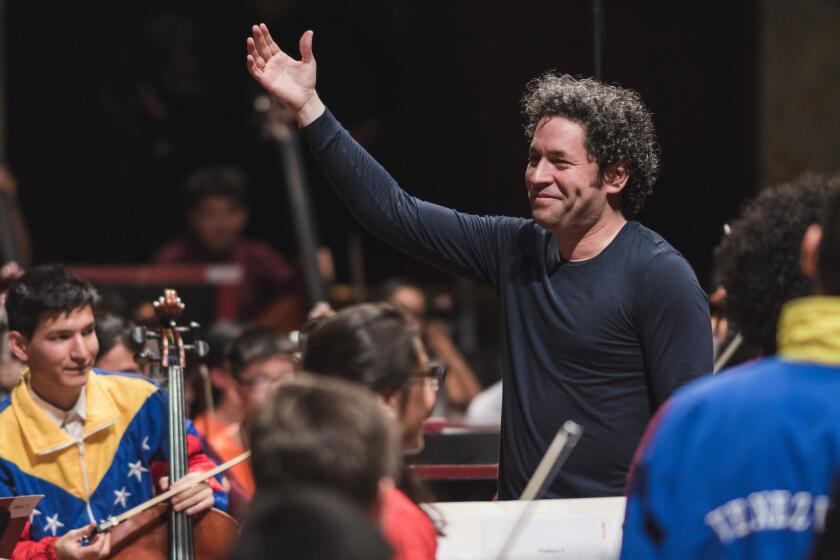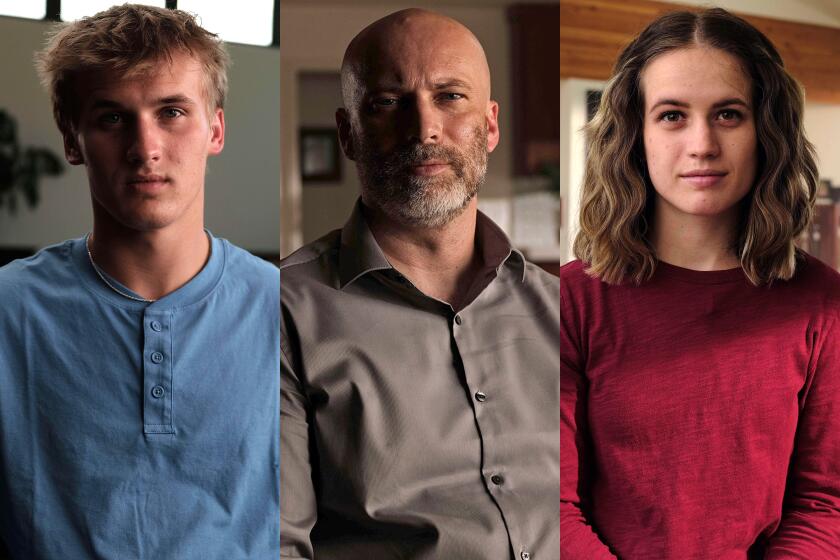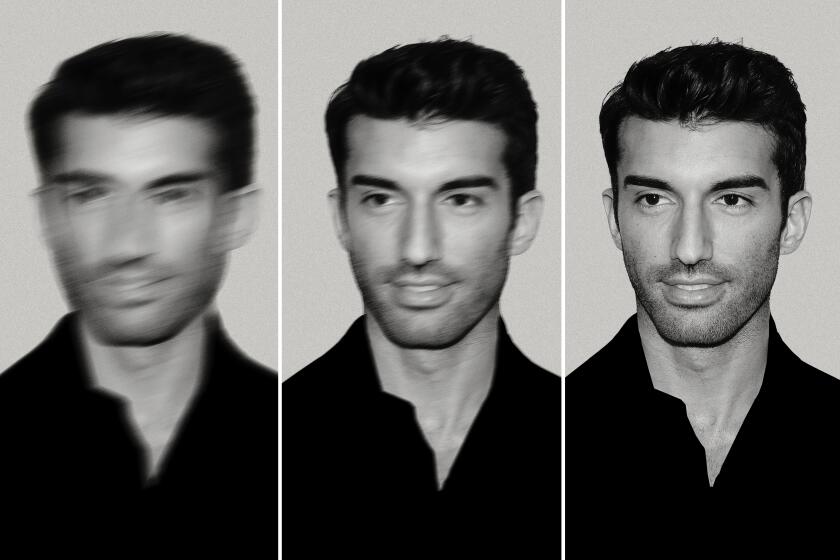City Seeking Buyer to Revive Egyptian Theatre : Culture: Officials say the Hollywood landmark will have to pay for itself. It closed this month after years of decline.
- Share via
When Sid Grauman opened his Egyptian Theatre on Hollywood Boulevard in 1922, an orchestra played, a Wurlitzer thundered and singers and dancers filled the stage. A robed sentry paced the roof and Douglas Fairbanks was on the screen in the premiere of “Robin Hood.” A ticket cost $1.50--big money in those days.
When United Artists closed the theater earlier this month, the stage was gone, along with the looming columns that made the courtyard look like a pharaoh’s temple. The movie house where Grauman invented the big Hollywood premiere was reduced to showing “Aces: Iron Eagle III.” Cost of a ticket: $1.50.
Now, after the collapse of two years of negotiations for a hotel, office or shopping project at the site, the city is buying the property for a price expected to be nearly $1.7 million. The funds will come from the sale of tax increment bonds.
Officials hope to find someone to take over the Egyptian and continue to use it as a theater, but it will have to pay for itself. The city does not want to get involved in any more losing propositions such as downtown’s publicly subsidized Los Angeles Theatre Center, which closed last year after a prolonged financial crisis.
“Whoever proposes to use the building will also bring some rehabilitation resources as well as operating capital,” said H. Cooke Sunoo, Hollywood project manager for the Los Angeles Community Redevelopment Agency. “We absolutely do not want to get involved in subsidizing the operations of the organization using the theater.”
He said there have been a number of inquiries in recent weeks, but no decision will be made until an official request for proposals is published this fall. The renovation could cost at least $1 million.
“We know the economics of it are very difficult,” said Sunoo. His agency failed to interest any theater chains in the Egyptian.
But once the city buys the theater, an immediate return on investment will not be a top priority, Sunoo said.
Instead, the hope is that it will bring theatergoers back to an area where Hollywood Boulevard’s ersatz glamour quickly fades to a grungy reality of beggars, runaways, cheap shops and street crime.
“We don’t have to make profits on the real estate end,” Sunoo said. “It would help the revitalization of Hollywood Boulevard to have it as a venue for the showing of motion pictures.”
City officials have spoken with American Cinematheque, an organization that shows old and new movies, stages seminars and honors industry figures. But Barbara Smith, managing director of the group, said financing will be a problem for anybody who applies.
“It’s going to need help, financial help, and where would that money come from?” she said. “Unfortunately, it has that problem of being in the middle of Hollywood . . . and unless they make it into a really nice theater, people aren’t going to go there.”
United Artists official John Neal said location was not the main factor in the decision to close the Egyptian.
“I couldn’t say that Hollywood is a bad place for a theater. I don’t think that’s true,” he said. Indeed, Mann’s Chinese Theater, site of the premiere of “Batman Returns,” brings in flocks of patrons, and General Cinema recently opened six screens at the nearby Galaxy complex.
At Pacific’s El Capitan, which reopened last year after a reported $6-million renovation, films consistently do better than elsewhere, said Milton Moritz, vice president of Pacific Theatres, which manages the El Capitan in a joint venture with the Walt Disney Co.
Like the Egyptian, the El Capitan is a large, single-screen theater, but its lavish ambience makes it a destination for movie fans from across Southern California, Moritz said.
“You can’t even compare the two,” he said. “At one time, the Egyptian was a magnificent theater, but if you go into the El Capitan now you’ll see that it’s not just catering to people walking up and down Hollywood Boulevard. Just to see the title curtains open up, it’s worth the price of admission.”
But United Artists could not make money at the Egyptian in an era of multiplex movie houses, Neal said, no matter how many sphinxes, hieroglyphics and winged cobras were on the walls. “We weren’t really operating at a profit in that theater and hadn’t been for some time,” he said.
The marquee, so decrepit it could no longer hold the names of movies, was covered with cardboard. Finally, the Egyptian closed on July 12.
When it was new, Grauman’s Egyptian was so famous for its decor, spotlight premieres and live entertainment that an industry publication, the Motion Picture Director, called it “essentially a national institution.”
The architectural theme of the movie palace, inspired by the unearthing of King Tut’s Tomb in 1922, spread across the country. City officials point to its architectural significance as yet another reason to save the building.
“The lighting was lovely and the air was slightly perfumed,” said Terry Helgesen, 75, who remembers seeing the Duncan sisters, Rosetta and Vivian, in the 1927 opening of “Topsy and Eva,” Grauman’s last premiere at the Egyptian.
“They always perfumed Mr. Grauman’s theaters,” Helgesen said. “He had it made for him and you could buy it in the lobby.”
But Grauman soon turned his attention to the larger Chinese Theatre, which opened a few blocks to the west in May, 1927, and the Egyptian--once ballyhooed as “The House Where Dreams Come True”--passed into other hands.
Movie buffs bemoaned the loss of the intricately decorated proscenium arch, which was hacked out in 1949 to make way for a big screen.
“I think it’s a tragedy that the place sank as low as it did in the end,” said John Miller, president of the Los Angeles Historic Theater Foundation.
More to Read
The biggest entertainment stories
Get our big stories about Hollywood, film, television, music, arts, culture and more right in your inbox as soon as they publish.
You may occasionally receive promotional content from the Los Angeles Times.










